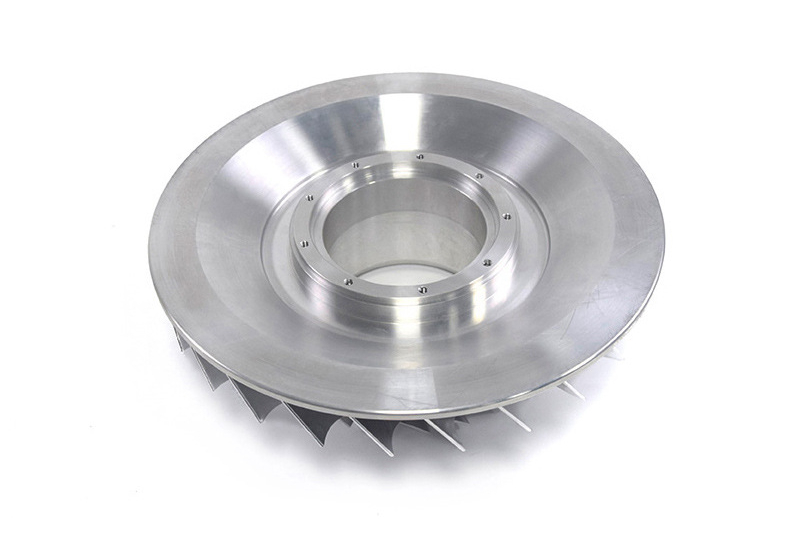Advancements in CNC Milling of Titanium Alloys for Nuclear Energy Applications
Introduction
The Nuclear Energy industry demands exceptionally robust materials that resist extreme radiation, corrosion, and thermal stresses. Titanium alloys, known for their superior strength-to-weight ratio, corrosion resistance, and stability under irradiation, are increasingly essential for reactor components, fuel assemblies, and containment systems.
The evolution of precision CNC milling services has significantly advanced the manufacturing of intricate titanium alloy components. CNC milling techniques now achieve higher accuracy, improved surface finishes, and better dimensional control, essential for reliability and safety in nuclear applications.
Titanium Alloy Materials
Material Performance Comparison
Titanium Alloy | Tensile Strength (MPa) | Yield Strength (MPa) | Max. Operating Temp (°C) | Typical Applications | Advantage |
|---|---|---|---|---|---|
900-1100 | 830-910 | 400-450 | Reactor vessel internals, structural components | Excellent strength-to-weight ratio, high corrosion resistance | |
950-1200 | 880-950 | 500-550 | Fuel assembly brackets, radiation shielding supports | High creep resistance, excellent radiation stability | |
870-970 | 825-895 | 450-500 | Heat exchanger components, piping systems | Outstanding weldability, good thermal conductivity | |
860-950 | 795-870 | 350-400 | Containment vessel supports, sensitive reactor components | Superior toughness, reduced impurity content |
Material Selection Strategy
The choice of titanium alloys for nuclear energy applications depends on critical performance requirements:
Reactor structural components with high mechanical stress: Ti-6Al-4V (TC4) for optimal strength and durability.
High-temperature radiation environments: Ti-6Al-2Sn-4Zr-2Mo (Grade 4) due to its exceptional creep resistance and radiation stability.
Components requiring excellent weldability and thermal management: Ti-5Al-2.5Sn (Grade 6) provides reliable welding and thermal performance.
Safety-critical and sensitive components: Ti-6Al-4V ELI (Grade 23) offers enhanced toughness and low impurities to maximize reliability.
CNC Milling Processes
Process Performance Comparison
CNC Milling Technology | Dimensional Accuracy (mm) | Surface Roughness (Ra μm) | Complexity Level | Typical Applications | Key Advantages |
|---|---|---|---|---|---|
±0.005 | 0.4-0.8 | Very High | Turbine blades, reactor core components | Exceptional precision, ideal for intricate geometries, reduced tool wear | |
±0.005-0.02 | 0.4-1.6 | Extremely High | Complex reactor assemblies, control rods | Maximum versatility, ability to machine highly intricate and complex designs | |
±0.005-0.015 | 0.6-1.2 | High-Very High | Fuel assembly supports, critical containment parts | Highly accurate, consistent quality control and tight tolerance capabilities | |
±0.01 | 0.8-1.6 | High | Reactor internals, structural brackets | Specifically optimized tooling and processes for titanium alloys |
Process Selection Strategy
Optimal CNC milling technology for titanium alloy components varies with complexity and precision needs:
Simple to moderate geometries, specific titanium applications: Titanium CNC Machining offers tailored titanium-specific tooling and efficiency.
Complex geometries requiring exceptional precision: 5-axis or Multi-axis milling achieves superior dimensional accuracy, minimized secondary processing, and excellent surface finishes.
Critical parts with stringent tolerance demands: Precision Machining Service ensures strict adherence to high-quality nuclear standards and consistent accuracy.
Surface Treatment
Surface Treatment Performance
Treatment Method | Corrosion Resistance | Wear Resistance | Temperature Limit (°C) | Typical Applications | Key Features |
|---|---|---|---|---|---|
Excellent (>500 hours ASTM B117) | Moderate-High (surface hardness ~HV350-450) | 300-400 | Reactor internals, cooling systems | Enhanced oxide layer; improved corrosion resistance | |
Superior (>1000 hours ASTM B117) | High (Surface hardness HV2000-3000) | 450-600 | High-wear components, control rods | Exceptional hardness, abrasion and wear resistance | |
Excellent (600-800 hours ASTM B117) | Moderate (improved surface finish reducing friction) | Up to 300 | Fuel rods, precise reactor fittings | Mirror-smooth finish, minimizes corrosion initiation | |
Excellent (500-700 hours ASTM B117) | Moderate (surface contamination removal) | Up to 350 | All titanium components | Chemical cleaning, corrosion initiation reduction |
Surface Treatment Selection
Choosing surface treatments for titanium components involves careful matching to application scenarios:
High corrosion-resistance requirements: Anodizing or Passivation provides effective surface protection.
Critical wear-intensive components: PVD coating significantly improves surface durability and lifespan.
Sensitive components needing reduced surface friction: Electropolishing delivers improved surface smoothness and reduced corrosion risks.
Quality Control
Quality Control Procedures
Dimensional inspection via CMM and optical comparator equipment.
Surface roughness verification using advanced profilometers.
Mechanical properties assessment, including tensile and yield strength tests (ASTM E8).
Radiographic and ultrasonic testing (RT & UT) for internal defect inspection.
Corrosion resistance validation through ASTM B117 salt spray testing.
Comprehensive documentation complying with ASME Boiler and Pressure Vessel Code, ISO 9001, and nuclear safety standards (ANSI N45.2).
Industry Applications
Titanium Alloy Applications
Reactor vessel internals and structural supports.
Fuel assemblies, control rods, and brackets.
High-integrity piping systems and cooling system components.
Specialized shielding components for radiation environments.
Related FAQs:
Why are titanium alloys ideal for nuclear energy applications?
How does CNC milling enhance precision for nuclear components?
Which titanium alloy is most suitable for radiation-intensive environments?
How do surface treatments extend the lifespan of titanium nuclear components?
What quality standards apply to CNC-milled titanium parts in the nuclear industry?

